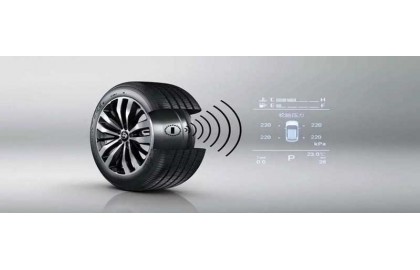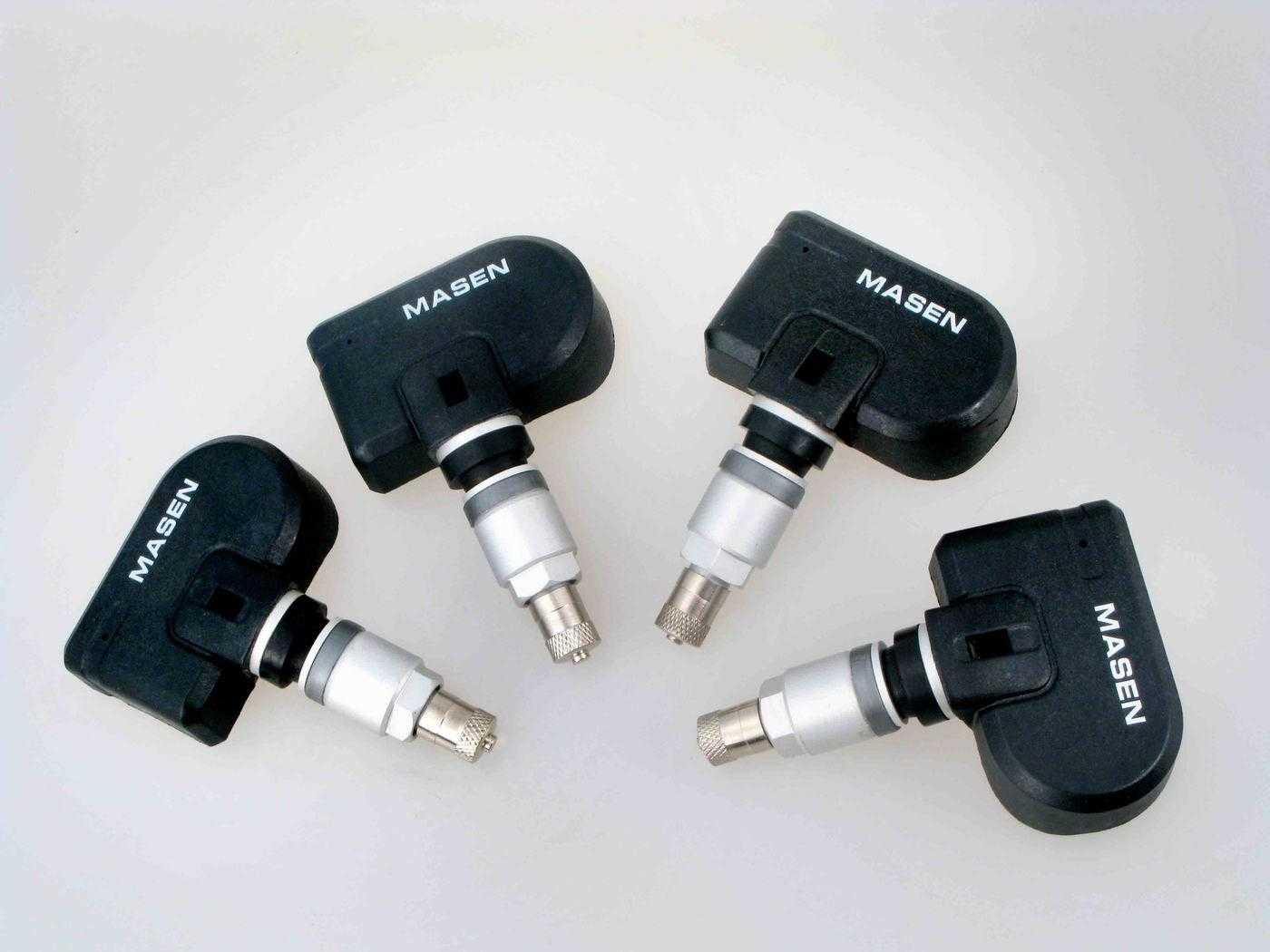Related knowledge of tire pressure monitoring system

The full name of TPMS is tire pressure monitoring system, which is the abbreviation of "tire pressure monitoring system". The function of TPMS is to automatically monitor the tire pressure in real-time while the car is running and to give alarms to tire leaks and low air pressure to ensure driving safety.
As an important part of the car, the main factor for tire performance is tire pressure. If the tire pressure is too low or too high, it will affect the performance of the tire and reduce its service life, and ultimately affect driving safety.
The full name of TPMS is tire pressure monitoring system, which is the abbreviation of "tire pressure monitoring system". The function of TPMS is to automatically monitor the tire pressure in real-time while the car is running and to give alarms to tire leaks and low air pressure to ensure driving safety.

working principle:
When the air pressure of a certain tire decreases, the rolling radius of the wheel will become smaller, causing it to rotate faster than other wheels. By comparing the speed difference between the tires, in order to achieve the purpose of monitoring tire pressure.
The indirect tire alarm system TPMS actually monitors the air pressure by calculating the rolling radius of the tire; the direct tire pressure monitoring system TPMS directly replaces the valve with a sensor for the valve of the original car, using the sensor chip in the sensor Perceive subtle changes in tire pressure and temperature when tires are stationary and in motion, convert electrical signals into radio frequency signals, and use independent channel transmitters to transmit them into the receiver, so that the owner can be both driving and stationary Know the tire pressure and temperature of the body tires.
The current tire pressure monitoring systems are all direct. Indirect tire pressure monitoring systems have basically been eliminated. Only a small number of imported cars produced in 2006 are equipped with indirect tire pressure monitoring systems, such as Magotan, Honor, and other models.
The tire pressure monitoring system is generally installed on the rim. The built-in sensor senses the air pressure in the tire, converts the air pressure signal into an electrical signal, transmits the signal to the receiver through a wireless transmitter, and displays various data changes or changes on the display. In the form of buzzing, the driver can inflate or deflate the tire in time based on the displayed data, and if the leakage is found, it can be dealt with in time, so that the big accident can be resolved in a small place.
Types of:
Currently, on the market, TPMS can be divided into indirect tire pressure monitoring systems and direct tire pressure monitoring systems.
Indirect tire pressure monitoring system
An indirect tire pressure monitoring system (Wheel-Speed Based TPMS) is also called WSB. WSB needs to compare the speed difference between tires through the wheel speed sensor of the car's ABS system to achieve the purpose of monitoring tire pressure. ABS uses the wheel speed sensor to determine whether the wheels are locked, thereby determining whether to activate the anti-lock braking system. When the tire pressure decreases, the weight of the vehicle will make the tire diameter smaller and the speed of the vehicle will change. Changes in vehicle speed will trigger the WSB's alarm system to remind car owners to pay attention to insufficient tire pressure. Therefore, indirect TPMS is a passive TPMS.
Direct tire pressure monitoring system
Direct tire pressure monitoring system (Pressure-Sensor Based TPMS, referred to as PSB), PSB uses a pressure sensor installed on the tire to measure the tire pressure and uses a wireless transmitter to send pressure information from the tire to the central receiver module System, and then display the tire pressure data. When the tire pressure is low or leaks, the system will alarm. Therefore, the direct TPMS belongs to the active TPMS.
Comparison of advantages and disadvantages:
Both WSB and PSB have their own advantages. PSB provides more advanced functions to measure the actual instantaneous pressure inside each tire at any time, making it easy to determine the faulty tire. The cost of the WSB system is relatively lower than that of the PSB, and it can be completed only by software upgrades on the four-wheel ABS. But WSB is not as accurate as PSB, and at the same time, WSB cannot determine the true condition of the faulty tire.
In addition to PSB and WSB, there is also a composite TPMS on the market, which has the advantages of both PSB and WSB. Equipped with direct sensors in two diagonal tires, and install a four-wheel indirect system. Compared with the direct system, this composite system can reduce the cost and overcome the shortcomings of the indirect TPMS that cannot detect the simultaneous low air pressure of multiple tires. However, this composite TPMS still cannot provide a real-time data display of the actual pressure of all tires like PSB.

The battery life of the direct tire pressure monitoring system for the sensor power supply varies from 3 years, 5 years, and 10 years; moreover, the receiver part requires no changes to the original car power supply except for the SCHRADER tire pressure monitoring system. Modify the original car circuit or connect the cigarette lighter to obtain power: There are some cheap tire pressure monitoring systems that cannot correctly and timely display the changes in tire pressure and temperature in a static state. The car must be moved for more than 40 yards. If the signal is monitored, there is no doubt that this will inevitably cause a huge safety hazard to drive safety.
1. Proactive safety system beforehand
Existing automobile safety systems, such as anti-lock braking systems, electronic speed locks, electronic power steering, airbags, etc., can only perform their functions to protect life after an accident, which is a "remedial type" safety after the accident. system. However, TPMS is different from the above-mentioned safety systems. Its function is that when tire pressure is about to fail, TPMS can remind the driver to take safety measures and eliminate possible accidents through alarm signals. It is a "proactive beforehand" safety system.
2. Improve the service life of tires
Statistics show that if the tire pressure of a driving car is lower than 25% of the standard value for a long time, the service life of the tire can only reach 70% of the design requirement. On the contrary, if the tire pressure is too high, the wear of the middle part of the tire will increase. If the tire pressure is higher than 25% of the normal value, the service life of the tire will be reduced to 80-85% of the design requirement. The strength of the tire will increase with the tire As the temperature rises and decreases, the elastic bending of the tire will also increase, and for every 1°C increase in temperature, the loss of the tire will increase by 2%.
3. Reduce fuel consumption and benefit environmental protection
According to relevant statistics, the tire pressure is 30% lower than the normal value, the engine needs more horsepower to provide the same speed, and the gasoline consumption will become 110% of the original. Excessive consumption of gasoline not only increases the driving expenses of the driver, but the burning of more gasoline also produces more car exhaust, which affects the air quality. After installing the TPMS, the driver can control the tire pressure value in real-time, which can not only reduce fuel consumption but also reduce the environmental pollution caused by car exhaust.
4. Avoid unconventional wear and tear of vehicle components
If the car is driven under the condition of high tire pressure, it will cause serious wear of the engine chassis for a long time; if the tire pressure is not uniform, it will cause the brakes to deviate, thereby increasing the unconventional loss of the suspension system.
History development:
As early as 2001, the United States passed the TRAD Act. The Act requires that all new cars sold in the United States by 2007 must use TPMS as a standard configuration. "The National Highway Traffic Safety Administration (NHTSA) regulations issued in 2002 require that the monitor be installed on the tires. When the air pressure is lower than 25%~30% of the manufacturer’s recommended value, alert the driver. It is recommended that new cars should be equipped with a tire pressure monitoring system (TPMS) from 2004. Following the United States, Europe has also formulated corresponding regulations to require its domestic cars The manufacturer installs TPMS.
At the Indianapolis Expo in the United States in 2004, Sima Tire Equipment Co., Ltd. of Canada launched the world’s second set of TPMS for motorcycle tires; the first set was launched by the British company Metasystem in 2002. "This product can be used in Monitor and display the inflated internal pressure and temperature information of each tire while the motorcycle is running. If there is a deviation, it will remind the rider to pay attention through the warning light.
The battery-free automobile tire pressure monitoring system developed by Alps Electric Co., Ltd. has recently passed relevant tests and verified to comply with European and American electromagnetic wave-related laws and regulations. In the future, the evaluation will focus on the influence of factors such as driving conditions and tire types. Field tests were conducted in Europe, America, Japan, and other places. Samples were provided in August 2004 and mass production was put into production in 2006.
design background:
Both the excellent performance of the car and the length of the tire's service life are affected by the tire pressure. According to data from SAE (Society of Automotive Engineers, the Society of Automotive Engineers), in the United States, there are more than 260,000 traffic accidents caused by tire failure each year, and 70% of highway accidents caused by flat tires. In addition, natural tire leakage or under-inflation is the main reason for tire failures. Approximately 75% of tire failures occur every year. The data also shows that: in high-speed driving, puncture caused by tire failure is an important reason for frequent traffic accidents.
The invisible killer of flat tires has caused many human tragedies and brought incalculable economic losses to the country and enterprises. Therefore, in order to reduce the occurrence of traffic accidents caused by flat tires, the US federal government requires automakers to accelerate the development of TPMS ( Tire Pressure Monitoring System).
Elecdeer is a professional auto parts purchasing platform. Elecdeer offers automobile and motorcycle products at amazing ex-factory prices. This is the best shop for auto and motorcycle parts. We provide the best quality products and the best service. Welcome to contact us.
